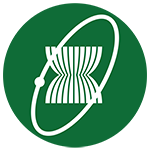Functional MRI During Memory Recognition in Healthy Adults
DOI:
https://doi.org/10.46475/aseanjr.v19i1.19Abstract
Purpose: To localize the functional cortices enrolled during abstract picture recognition task that might be a baseline study to provide Thais standard paradigm for future research.
Material and methods: The protocol study was approved by institutional review broad and local ethics committee. Informed written consent was obtained from all participants after character of the experimental study was fully explained. Twenty healthy subjects underwent functional MRI and axial T1 weighted image, the latter was anatomic reference image. Abstract picture recognition task as block paradigm was used. Statistic analysis of fMRI datas were analyzed as a whole group analysis and using sample t test random effect analysis model, RFx (corrected P value <0.01). BOLD activities on brain surface rendering images were displayed as color from red (less activity) to yellow (strong activity). The anatomic reference image was loaded to overlay the colored maps and the anatomy of the cerebral cortical lobes and gyri and hippocampal formation were defined. In addition, BOLD activities are also displayed as color overlays on axial, coronal and sagittal views of T1W reference anatomic images, gradual change from dark blue (less activity) to red (most strong activity).
Results: Activation for abstract picture recognition was observed at the both-sided cerebellum, bilateral parietal lobes, left hippocampus, bilateral occipital lobes including calcarine cortices, left motor cortex, bilateral premotor cortices, supplementary motor area and left superior temporal gyrus (Wernickeûs area). There is asymmetry of the activities in both hemispheres with left-sided predominance. Bilateral parietal and occipital lobes showed the most intense activities.
Conclusion: Abstract picture recognition task showed activation in multiple areas of cortical brain, which correlates with the human memory processing.
Downloads
Metrics
References
2. Ojemann JG, Buckner RL, Corbetta M, Raichle ME. Imaging studies of memory and attention. Neurosurg Clin N Am 1997;8:307-9.
Gabrieli JD, Poldrack RA, Desmond JE. The role of left prefrontal cortex in language and memory. Proc Natl Acad Sci U S A 1998;95:906-13.
Wagner AD, Desmond JE, Glover GH, Gabrieli JD. Prefrontal cortex and recognition memory: functional-MRI evidence for context-dependent retrieval processes. Brain 1998;121:1985-2002.
Buckner RL, Kelley WM, Petersen SE. Frontal cortex contributes to human memory formation. Nat Neurosci 1999; 2:311-4.
Cohen NJ, Ryan J, Hunt C, Romine L, Wszalek T, Nash C. Hippocampal system and declarative (relational) memory: summarizing the data from functional neuroimaging studies. Hippocampus 1999;9:83-98.
Craig E, L. Stark, Larry R. Squire. Functional magnetic resonance imaging (fMRI) activity in the hippocampal region during recognition memory. The Journal of Neuroscience, October15, 2000, 20(20):7776-81.
Bellgowan PS, Binder JR, Swanson SJ. Side of seizure focus predicts left medial temporal lobe activation during verbal encoding. Neurology 1998;51:479-84.
Petrella JR, Krishnan S, Slavin MJ, Tran TT, Murty L, Doraiswamy PM. Mild cognitive impairment: evaluation with 4-T functional MRimaging. Radiology 2006;240:177-86.
Burton PD, Thomas PN, Tarek AY. Neuroimaging Clinical of North America. Anatomic basic of functional MR imaging. 2001;11:305-41.
Puce A, Allison T, Gore JC, McCarthy G. Face-sensitive regions in human extrastriate cortex studied by functional MRI. J Neurophysiol 1995;74:1192-9.
Anthony D., Benjamin J., Itamar K. Parietal lobe contributions to episodic memory retrieval. TRENDS in Cognitive Sciences 2005;9:445-53.
Gottlieb J. From thought to action: the parietal cortex as a bridge between perception, action and cognition. Neuron 2007;53:9-16.
Aggleton, J.P. and Brown, M.W. 1999. Episodic memory, amnesia and the hippocampal-anterior thalamic axis. Behav. Brain Sci. 22: 425-89.
Teng, E., Stefanacci, L., Squire, L.R., and Zola, S.M. 2000. Contrasting effects on discrimination learning after hippocampal lesions and conjoint hippocampal-caudate lesions in monkeys. J. Neurosci. 20:3853-63.
Rombouts SA, Barkhof F, Veltman DJ, et al. Functional MR imaging in Alzheimerûs disease during memory encoding. AJNR Am J Neuroradiol 2000;21:1869-75.
Downloads
Published
How to Cite
Issue
Section
License
Disclosure Forms and Copyright Agreements
All authors listed on the manuscript must complete both the electronic copyright agreement. (in the case of acceptance)

















